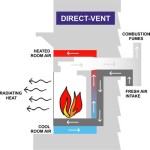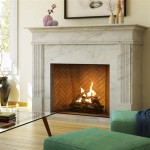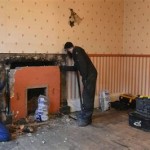Mount TV Fireplace: A Comprehensive Guide
The convergence of home entertainment and interior design has led to the increasing popularity of mounting televisions above fireplaces. This arrangement, often referred to as a "Mount TV Fireplace" setup, presents both aesthetic benefits and potential challenges. Understanding the intricacies involved in this type of installation is crucial for ensuring safety, functionality, and longevity of both the television and the fireplace surround.
This article will explore the various aspects of mounting a television above a fireplace, encompassing considerations such as heat management, mounting options, cable management, viewing height, and potential risks. It aims to provide a comprehensive guide to individuals contemplating this design choice, enabling informed decision-making and successful implementation.
Heat Management and Television Longevity
The primary concern when mounting a television above a fireplace is the potential for heat damage. Fireplaces, regardless of whether they are wood-burning, gas, or electric, generate heat which can rise and directly impact the electronic components of the television. Excessive heat exposure can lead to a reduced lifespan for the television, potentially causing component failure, screen discoloration, or complete malfunction. The severity of the impact depends on several factors, including the type of fireplace, the distance between the fireplace and the television, and the presence of any protective measures.
Wood-burning fireplaces typically produce the most heat, followed by gas fireplaces. Electric fireplaces, while offering a visual flame effect, generally produce less heat and are sometimes equipped with features to direct heat outward rather than upward. However, even with electric fireplaces, sufficient distance and ventilation are necessary to prevent heat accumulation. The distance between the top of the fireplace opening and the bottom of the television should ideally be at least 12 inches, and preferably more, to allow for adequate heat dissipation.
Proper ventilation is also critical. The space behind the television should not be enclosed or restricted, as this can trap heat and exacerbate the problem. Consider using a recessed wall mount or creating a small air gap behind the television to improve airflow. Furthermore, the use of a mantel can act as a heat shield, deflecting rising heat away from the television. A wider and deeper mantel will offer greater protection. Regular monitoring of the temperature above the fireplace during operation is recommended to gauge the effectiveness of heat mitigation strategies. A simple thermometer placed near the intended location of the television can provide valuable data for assessment.
Mounting Options and Structural Considerations
Selecting the appropriate television mount is paramount for ensuring safety and stability. Several types of mounts are available, each with its own advantages and disadvantages. Fixed mounts are the simplest and most affordable option, holding the television in a static position. Tilting mounts allow for slight upward or downward adjustment of the viewing angle, which can be beneficial if the television is mounted at a high position. Full-motion mounts offer the greatest flexibility, allowing the television to be extended, swiveled, and tilted in multiple directions. This versatility can be useful for optimizing viewing angles from different locations in the room. Choosing a mount with a weight capacity that significantly exceeds the weight of the television is crucial for safety and long-term reliability.
The structural integrity of the wall is another important consideration. Most fireplaces are surrounded by brick, stone, or drywall. Attaching a television mount to brick or stone requires specialized anchors and drilling techniques. It is often advisable to consult with a professional installer for this type of installation. Drywall offers less inherent strength and requires the use of wall studs for secure mounting. A stud finder can be used to locate the studs behind the drywall. If the desired mounting location does not align with the stud locations, a bridging system, such as a piece of sturdy plywood secured to multiple studs, can be used to create a stable mounting surface. Always use appropriate screws and anchors designed for the specific type of wall material.
Before drilling any holes, it is essential to check for the presence of electrical wiring, plumbing pipes, or gas lines within the wall. Using a stud finder with a wire detection feature can help to identify potential hazards. If there is any uncertainty about the location of these services, consulting with a qualified electrician or plumber is strongly recommended. Drilling into a live electrical wire or a water pipe can have serious consequences. Furthermore, consider the weight distribution of the television and mount to ensure that the wall can safely support the load over time.
Cable Management and Aesthetics
Effective cable management is essential for maintaining a clean and organized appearance. Dangling cables can detract from the aesthetic appeal of the Mount TV Fireplace setup and can also pose a safety hazard. Several options are available for concealing cables, including in-wall cable management kits, cable raceways, and cable sleeves.
In-wall cable management kits allow cables to be routed through the wall cavity, concealing them completely. These kits typically consist of two wall plates, one located behind the television and the other near the floor, connected by a flexible conduit. Power cables, HDMI cables, and other signal cables can be run through the conduit, creating a seamless and clutter-free look. However, running power cables through the wall may violate local building codes in some jurisdictions. It is important to check with local authorities or a qualified electrician before undertaking this type of installation. Low-voltage cables, such as HDMI cables, can typically be run through the wall without issue.
Cable raceways are surface-mounted channels that conceal cables along the wall. These raceways are available in various sizes, colors, and materials, and can be painted to match the wall color. Cable sleeves are flexible tubes that wrap around cables, bundling them together and concealing them from view. These sleeves are a simpler and less intrusive option than in-wall cable management kits or cable raceways. Power outlets and signal inputs should be strategically located to minimize the visible length of cables. Consider installing recessed outlets behind the television to further reduce clutter. Careful planning and attention to detail are essential for achieving a clean and professional-looking installation.
Viewing Height and Ergonomics
The height at which the television is mounted above the fireplace significantly impacts the viewing experience. Mounting the television too high can lead to neck strain and fatigue, particularly during prolonged viewing sessions. The ideal viewing height is typically considered to be at eye level when seated. However, when mounting a television above a fireplace, it is often necessary to compromise on the ideal viewing height due to the existing structure of the fireplace and the desired aesthetic appearance.
A general guideline is to position the center of the television screen at or slightly below eye level when seated. This can be achieved by using a tilting mount to angle the television downward, compensating for the higher mounting position. The distance between the seating area and the television also plays a role in determining the optimal viewing height. A greater viewing distance allows for a slightly higher mounting position without causing excessive neck strain. Experimenting with different viewing heights before permanently mounting the television is recommended to ensure that the final position is comfortable and ergonomic.
Consider the size of the television when determining the optimal viewing distance. Larger televisions typically require a greater viewing distance. Online calculators and charts are available to help determine the appropriate viewing distance for different screen sizes. Furthermore, consider the viewing habits of the individuals who will be using the television. If the television is primarily used for casual viewing, a slightly higher mounting position may be acceptable. However, if the television is used for extended viewing sessions, such as watching movies or gaming, a lower mounting position is generally preferred.

Can I Mount My Tv Above The Fireplace

Can I Mount My Tv Above The Fireplace

ᑕ❶ᑐ What To Consider Before Mounting A Tv Above Fireplace

Is It Safe To Mount Your Tv Above The Fireplace Chimney And Wildlife

3 Alternatives To Mounting Your Television Above The Fireplace Avs

ᑕ❶ᑐ What To Consider Before Mounting A Tv Above Fireplace

Safely Mount A Tv Above An Electric Fireplace Touchstone Home S Inc

Everything You Need To Know About Tv Mounts For Fireplaces

Mounting Your Tv Above Fireplace

Dynamic Mounting Tv Mount Black Wall Mounted Brackets
Related Posts








